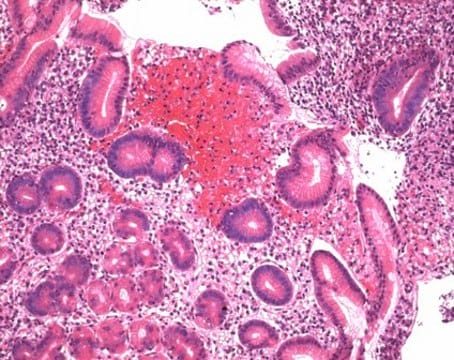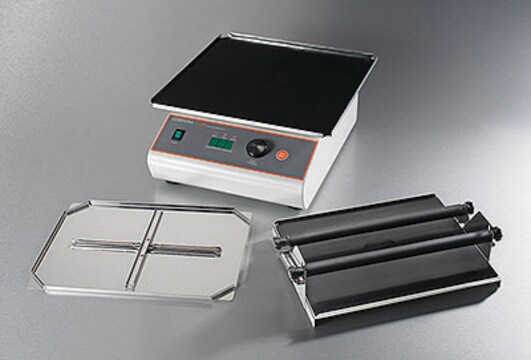51275
Hematoxylin solution according to Mayer
Synonym(s):
Mayer’s acid hemalum, Mordanted hematoxylin (Mayer)
Sign Into View Organizational & Contract Pricing
All Photos(1)
About This Item
Recommended Products
technique(s)
microbe id | staining: suitable
Quality Level
impurities
chloral hydrate
density
1.044 g/mL at 20 °C
Other Notes
Selective staining with hematoxylin, review; For staining nuclear material
Storage Class
12 - Non Combustible Liquids
wgk_germany
WGK 2
flash_point_f
Not applicable
flash_point_c
Not applicable
ppe
Eyeshields, Faceshields, Gloves, type ABEK (EN14387) respirator filter
Certificates of Analysis (COA)
Search for Certificates of Analysis (COA) by entering the products Lot/Batch Number. Lot and Batch Numbers can be found on a product’s label following the words ‘Lot’ or ‘Batch’.
Already Own This Product?
Find documentation for the products that you have recently purchased in the Document Library.
Customers Also Viewed
Sung-Ho Kook et al.
PloS one, 8(8), e71641-e71641 (2013-08-24)
Fibroblast growth factor-4 (FGF4) is expressed in embryonic stages and in adult tissues, where it plays critical roles in modulating multiple cellular functions. However, the exact roles of FGF4 on proliferation and differentiation of embryonic stem cells (ESCs) are not
Xinxu Yuan et al.
Frontiers in cell and developmental biology, 8, 597423-597423 (2021-01-08)
Recent studies reported that vascular endothelial cells (ECs) secrete NLR family pyrin domain-containing 3 (NLRP3) inflammasome products such as interleukin-1β (IL-1β) via extracellular vesicles (EVs) under various pathological conditions. EVs represent one of the critical mechanisms mediating the cell-to-cell communication
Tiziana Annese et al.
International journal of molecular sciences, 20(18) (2019-09-20)
Fibrosarcoma is an aggressive subtype of soft tissue sarcoma categorized in infantile/congenital-type and adult-type. Fibrosarcoma cells and its surrounding immune inflammatory infiltrates overexpress or induce the expression of fibroblast growth factor-2 (FGF-2) that have a crucial role in tumor progression
R.D. Lillie
Conn?s Biological Stains, 345-345 (1969)
R.D. Lillie
Conn?s Biological Stains, 8th edit., 345-345 (1969)
Our team of scientists has experience in all areas of research including Life Science, Material Science, Chemical Synthesis, Chromatography, Analytical and many others.
Contact Technical Service







